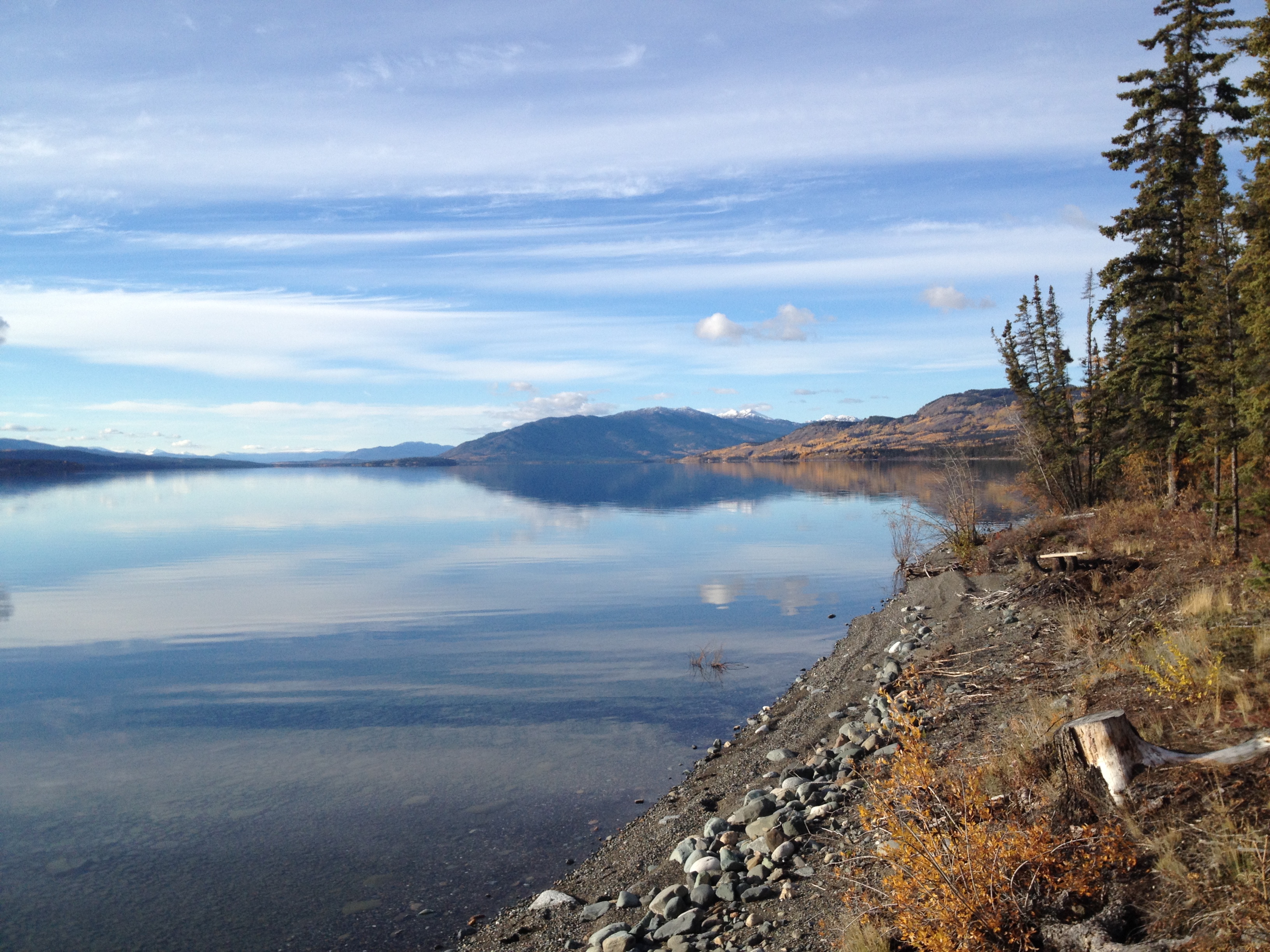Our 2015 Work in the Southern Lakes
News, Energy Supply, Environment, Regulatory, Reliability
Mar 02, 2015 4
First though, some background for those of you who may not be familiar with the project: during the summer and fall, we have to spill water at our Whitehorse facility because we don’t have the ability under our current water license to store it in the Southern Lakes system. However in winter there isn’t enough water to meet the demand and Yukon Energy must at times resort to using diesel to meet peak loads. Burning diesel is costly and emits greenhouse gases and other pollutants.
The Southern Lakes Concept proposes a change to our water license so we could store some of that water that is currently spilled, for use in the winter. It would involve a change to the existing Full Supply Level (the controlled maximum lake level stipulated in our water license) of 30 centimetres for a limited period in the late fall, and change of 10 centimetres to the Low Supply Level during the spring. In many years the water level of the Southern Lakes naturally exceeds this conceptual full supply level.
The Benefits
The Southern Lakes Concept could contribute about seven GWh/year of low cost energy, during the winter months when we need it most. This is sufficient to power about 600 to 800 homes, and save Yukoners up to $2.3 million a year at today’s diesel prices (up to $2-million annually of blended LNG/diesel at today’s prices), helping to keep electricity rates affordable. This renewable energy project would reduce GHG emissions by up to 5,600 tonnes a year (diesel) or up to 4,900 tonnes a year (blended LNG/diesel).
Yukon Energy is looking at other renewable options too, but squeezing the most out of our existing assets should be, and is, the first energy supply option we consider.
It's important to point out that there are already naturally occurring erosion and groundwater issues in the Southern Lakes. The mitigation work we would do as part of this project would address those issues systematically and effectively, providing a long term benefit to Southern Lakes residents.
In terms of our 2015 plans: over the next four or five months, we will do the following:
- Meet one-on-one with Southern Lakes residents who could see groundwater or erosion impacts as a result of this project to discuss possible mitigation measures;
- Continued engagement with the affected First Nations; and
- Continued discussions with other stakeholders.
Yukon Energy has undertaken many studies on the potential impacts of this project on wildlife, wetlands, shorelines and sub-surface structures. These studies – in combination with the focused engagement process we are doing - will inform a decision as to whether we would move ahead into the regulatory phase. Permitting would involve an amendment to our current water use license and an evaluation of potential environmental and socio-economic effects under YESAA. That work would likely take a year and a half to two years, so the earliest we can see this going ahead as an approved project would be in 2017.
Comments
by Erik Simanis
Curious how the additional dropping of the water level throughout the winter might affect the ice pack in terms of safety, etc, and if that drop in level would affect shore-dwelling wildlife (i.e. beavers)?
03.05.2015
by Yukon Energy Corporation
Thanks for your question Erik. In terms of mammals such as beavers, our research suggests there could be both positive and negative effects, although the negative ones would not be significant and there are easy solutions. For example, slightly higher fall and early winter water levels could shrink the amount of dry area inside muskrat and beaver dens. This might means that water levels would need to be gradually increased over several years, so the animals could slowly adapt to the change. We might also consider providing artificial dens for the first while. We would of course monitor the movement of these animals very closely to see what mitigation was needed, if any.
On the plus side, there should be more available food for these animals, since if this goes ahead as a project we expect to see more herbs, sedges, and shrubs. There could also be more under-ice habitats.
Respecting ice and safety, the thickness of ice is determined by both the temperature of the air and the water. Since these two things would not change as a result of this concept, we don’t expect to see any differences in the way ice forms or the thickness of the ice. We also don’t believe there to be any major changes in the slope of the near-shore ice. People and animals currently travel along low-slope shorelines and the ice would continue to follow the natural slope of these areas.
03.06.2015
by Jean-Paul Molgat
Were the 2007 Marsh Lake floods linked to YEC’s water storage or to the natural flood regime in the area?
03.09.2015
by Yukon Energy Corporation
Jean-Paul, during the summer months (from mid-May onward) Yukon Energy is required to have all our gates open, meaning we cannot manage the water in the Southern Lakes system. The flooding in 2007 was indeed a natural occurrence.
03.10.2015
4 comments